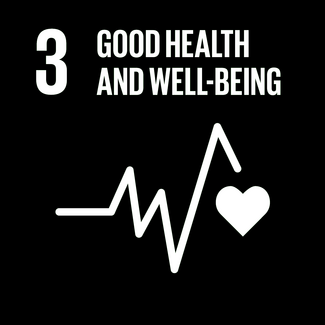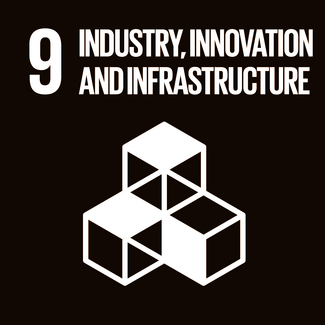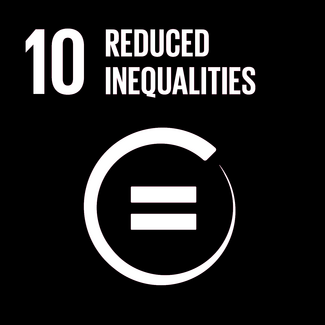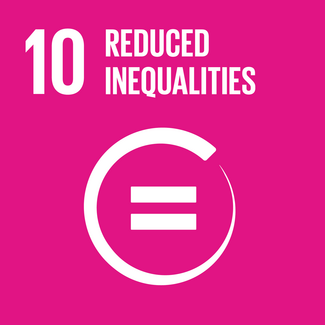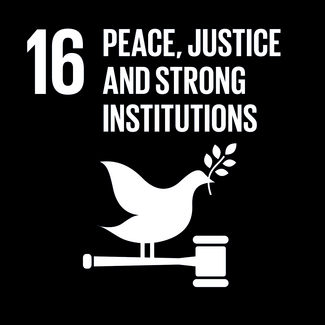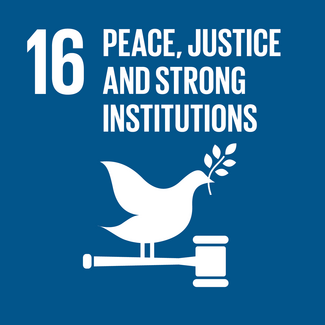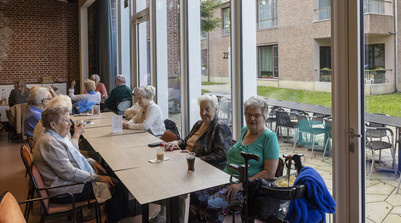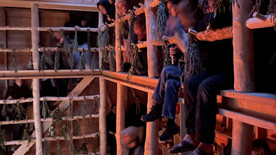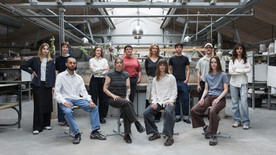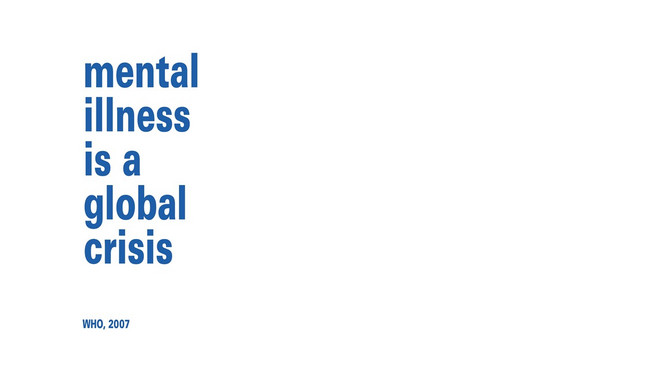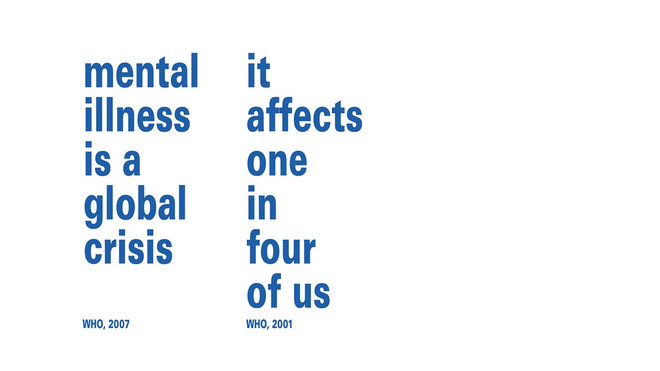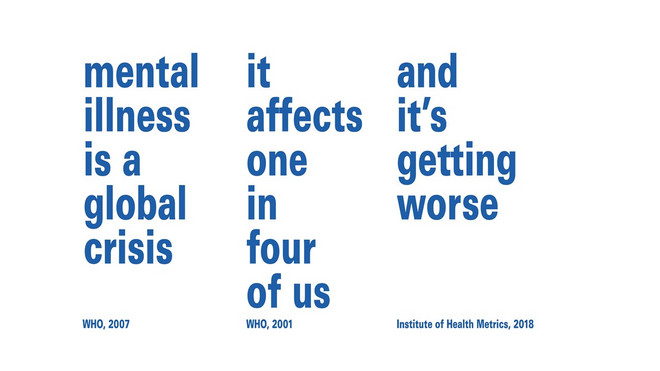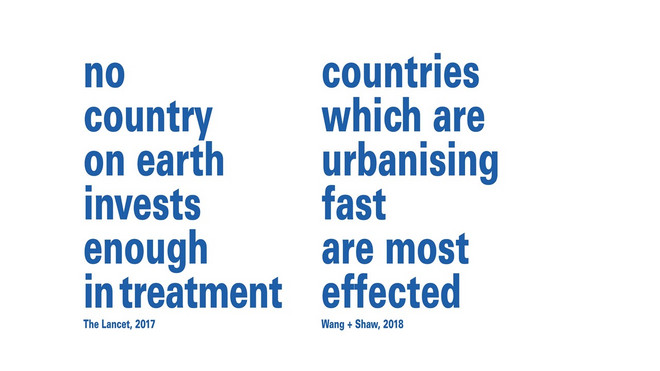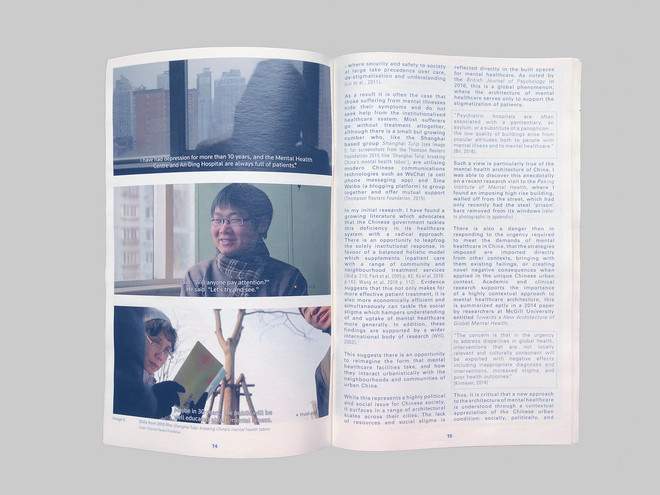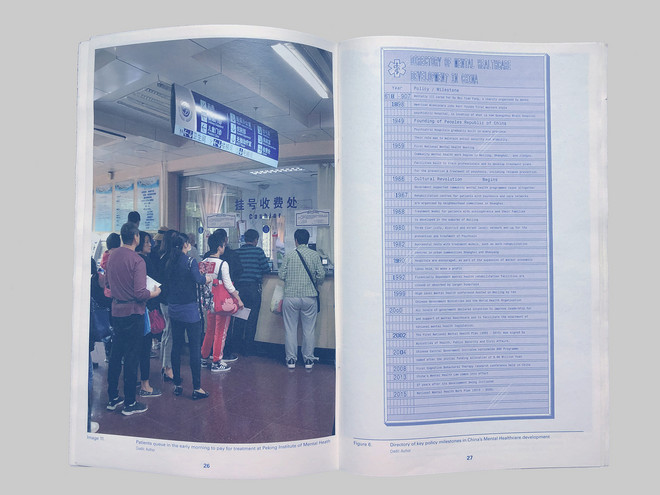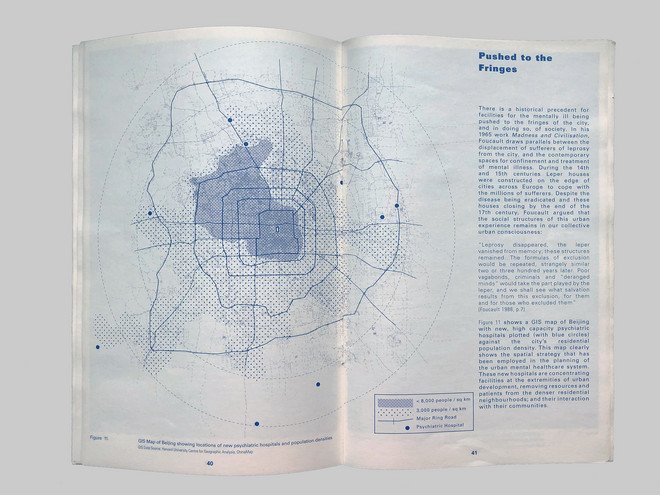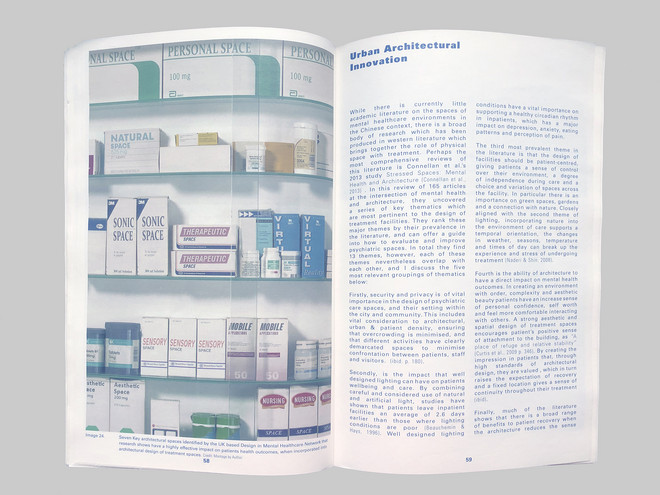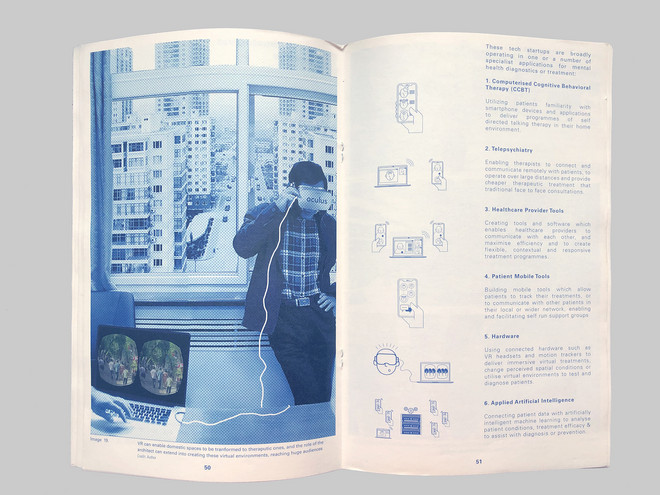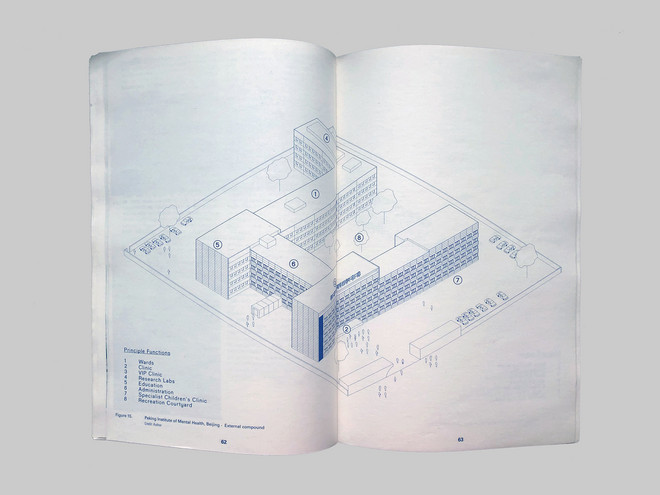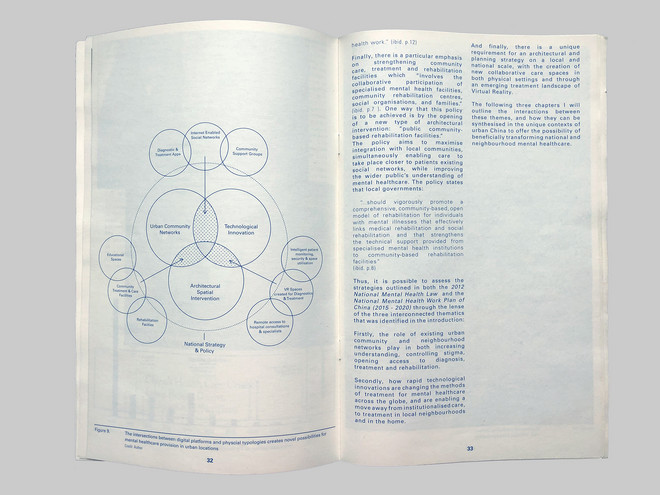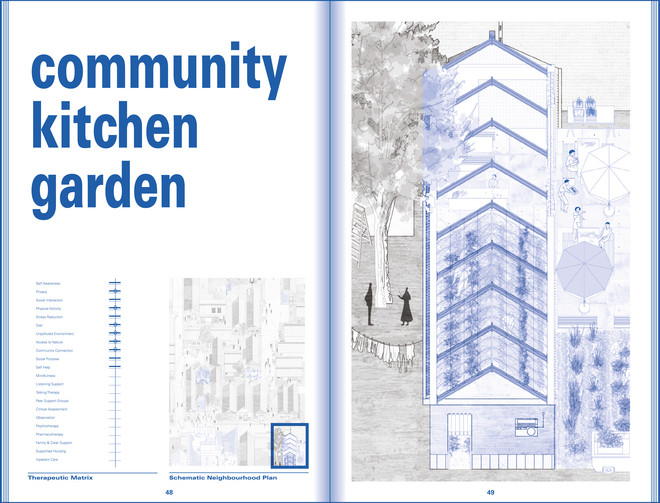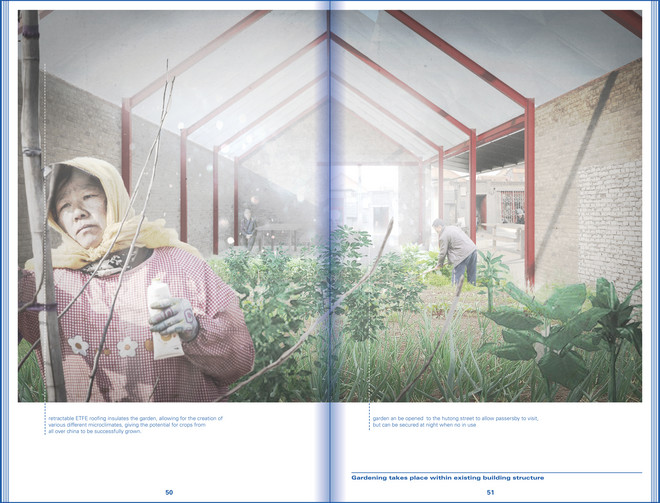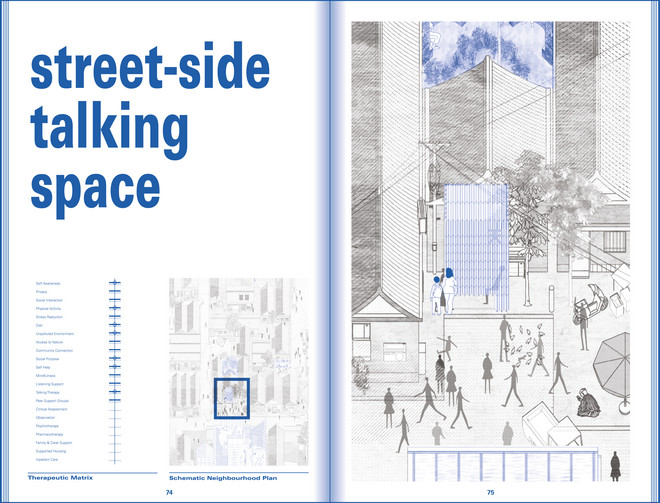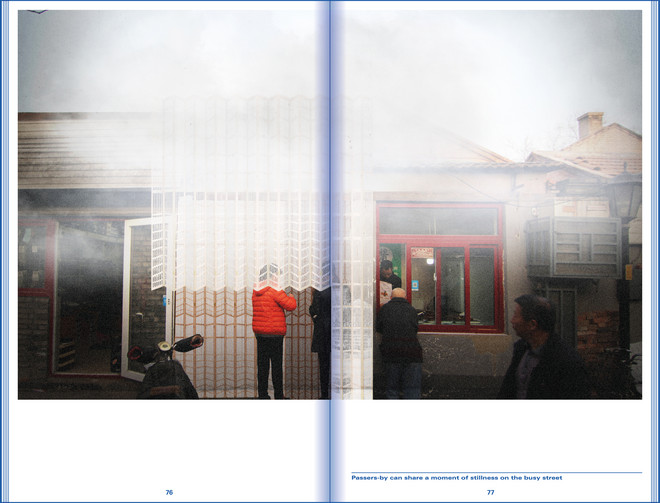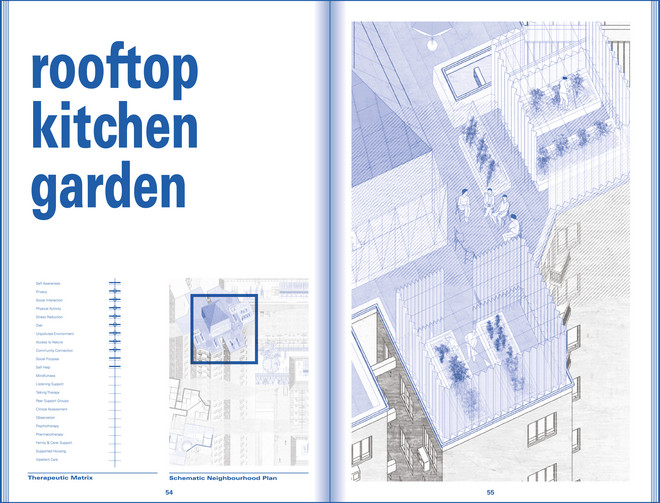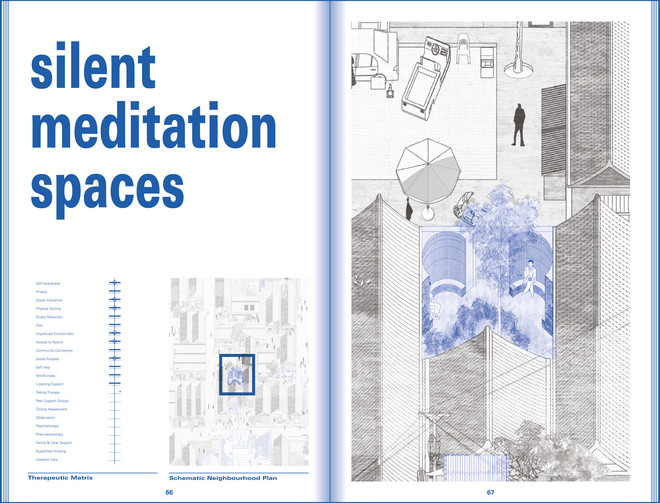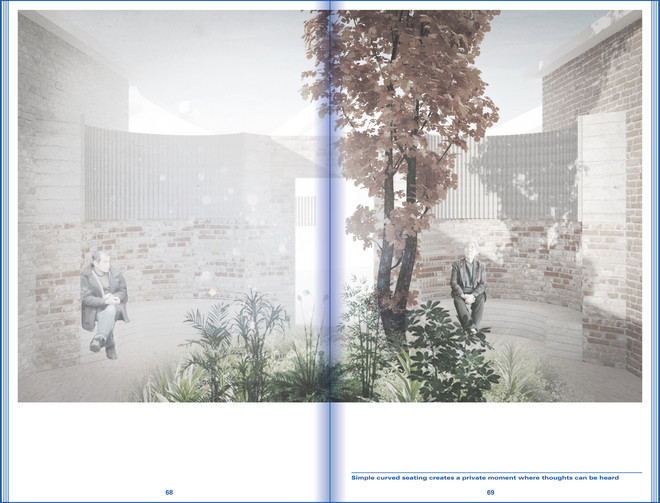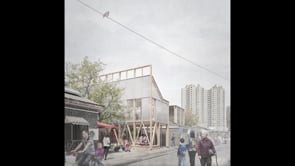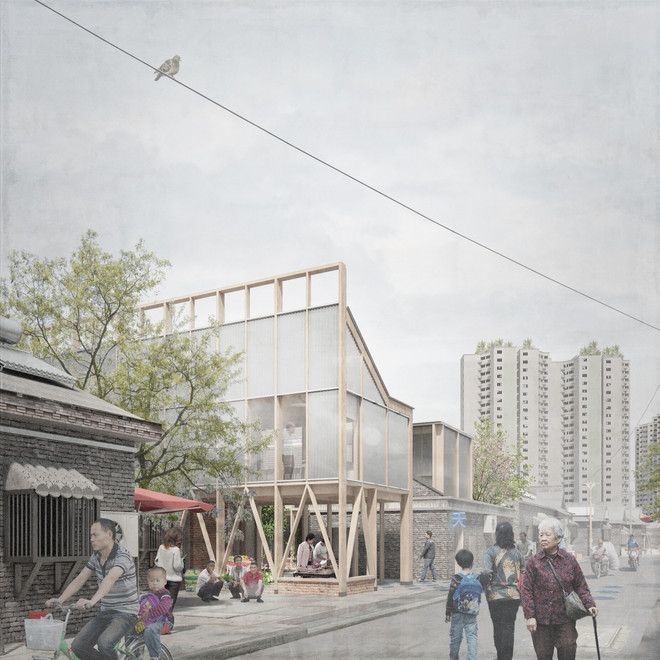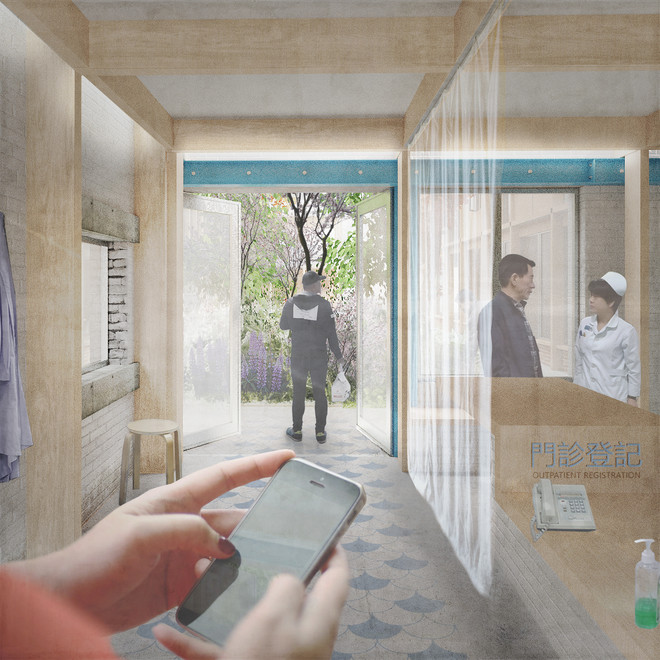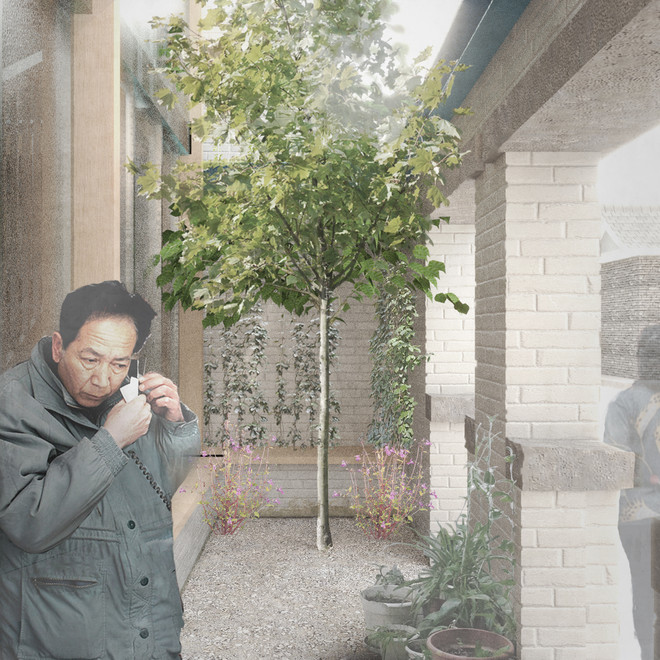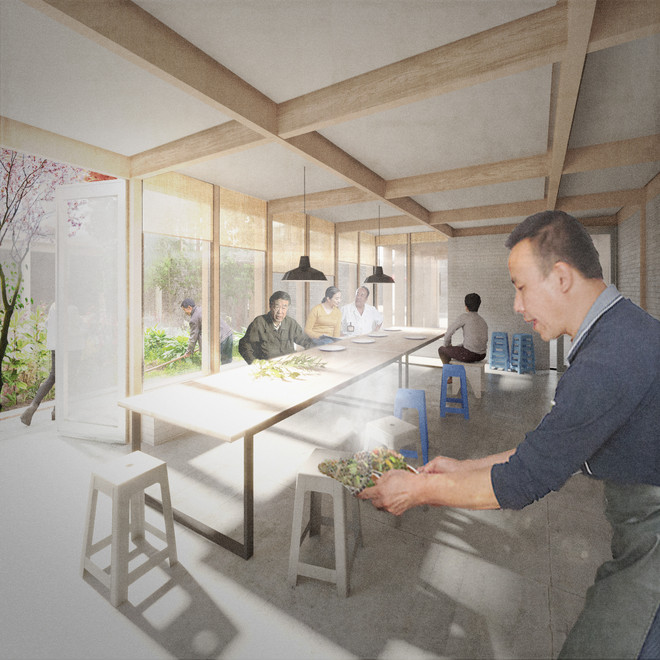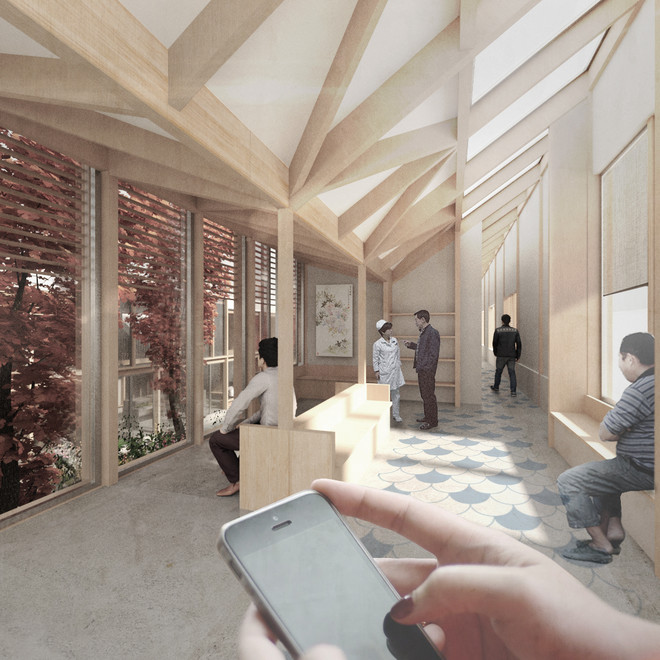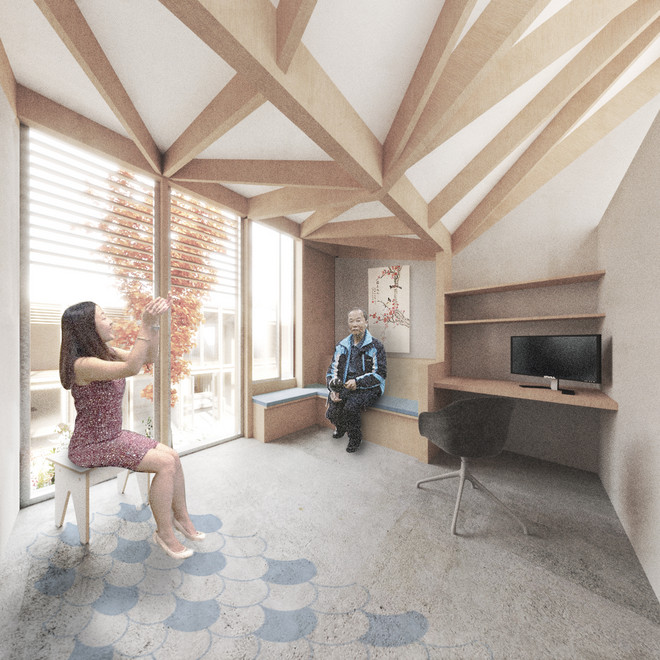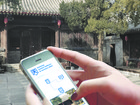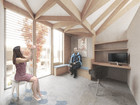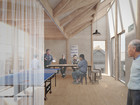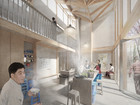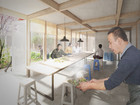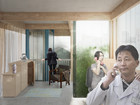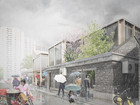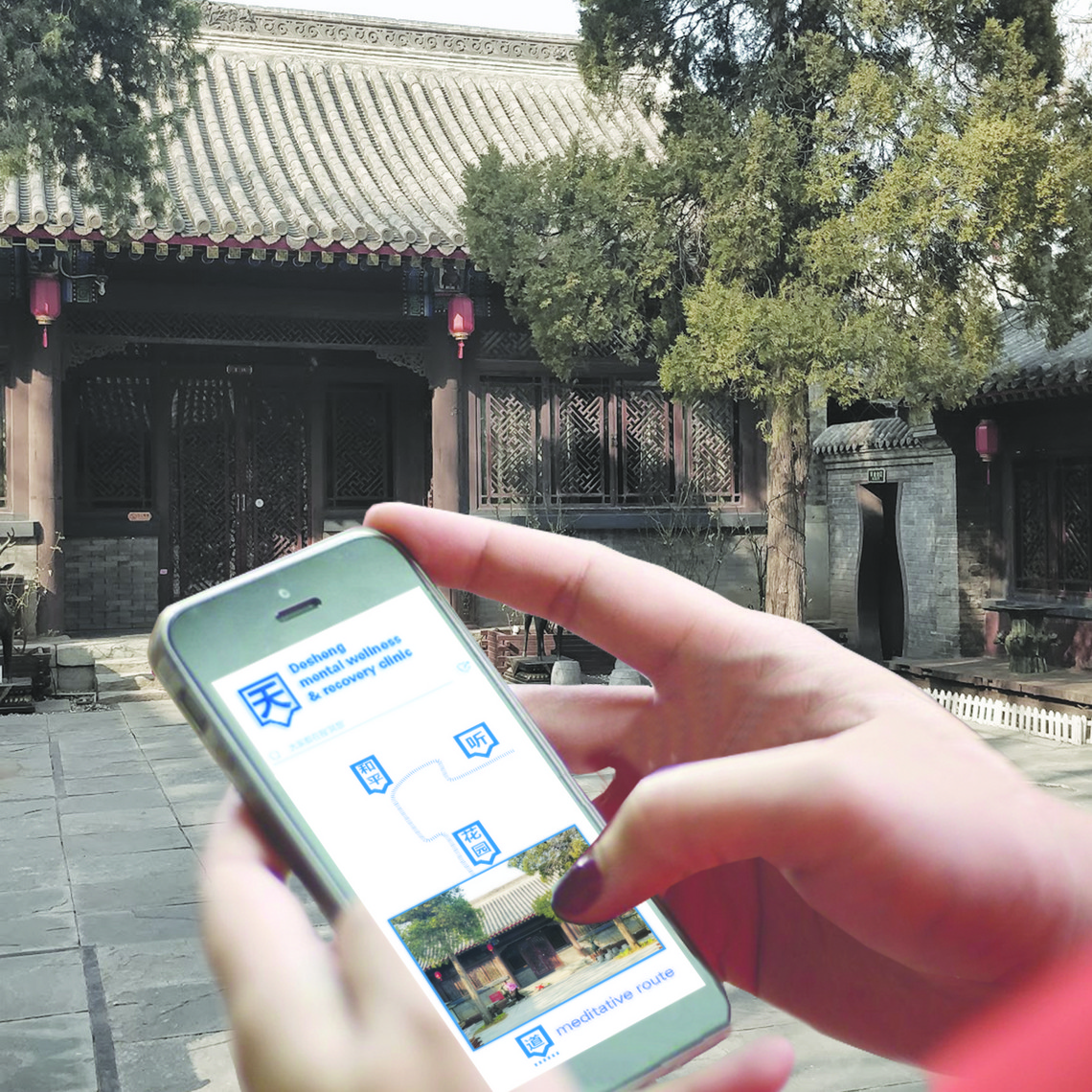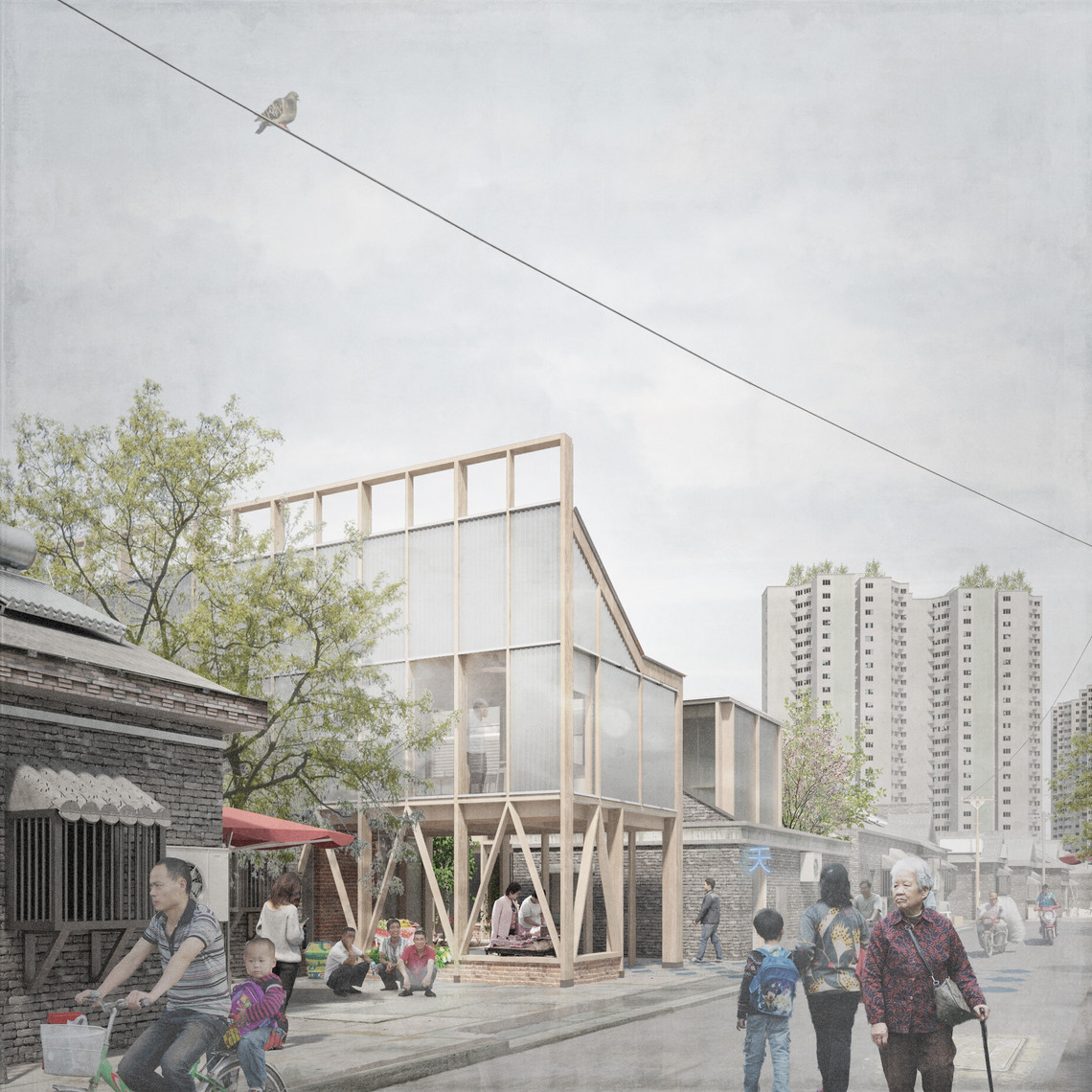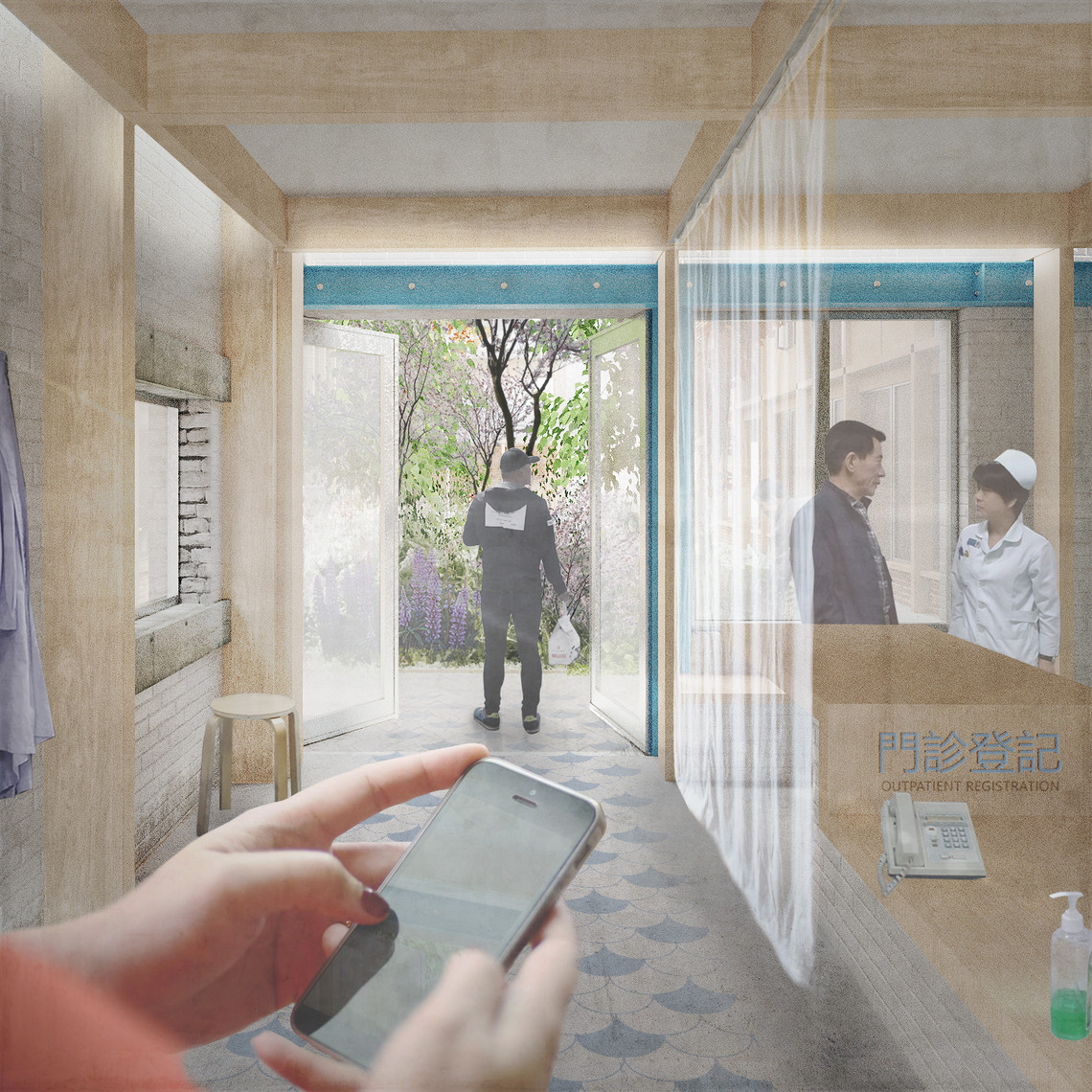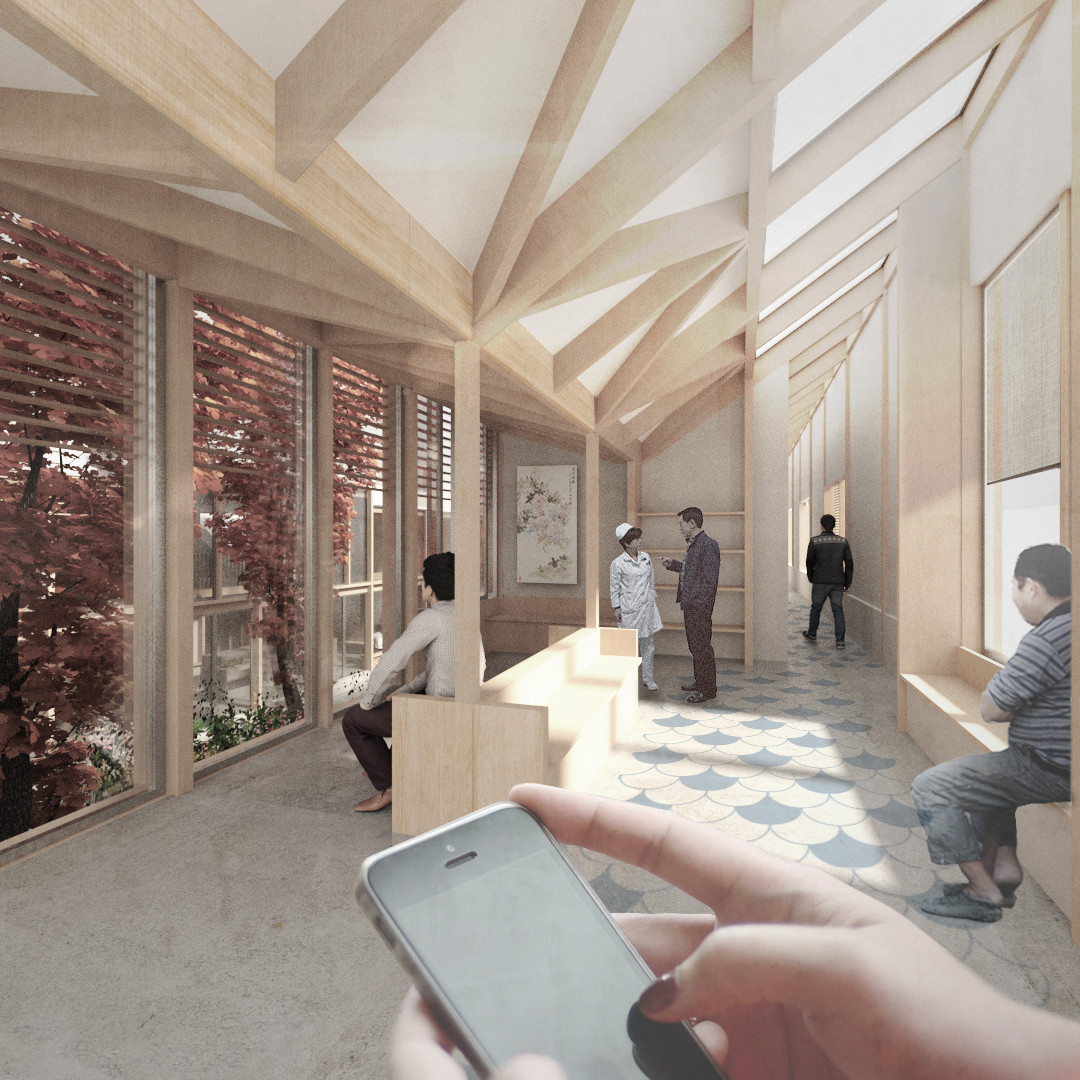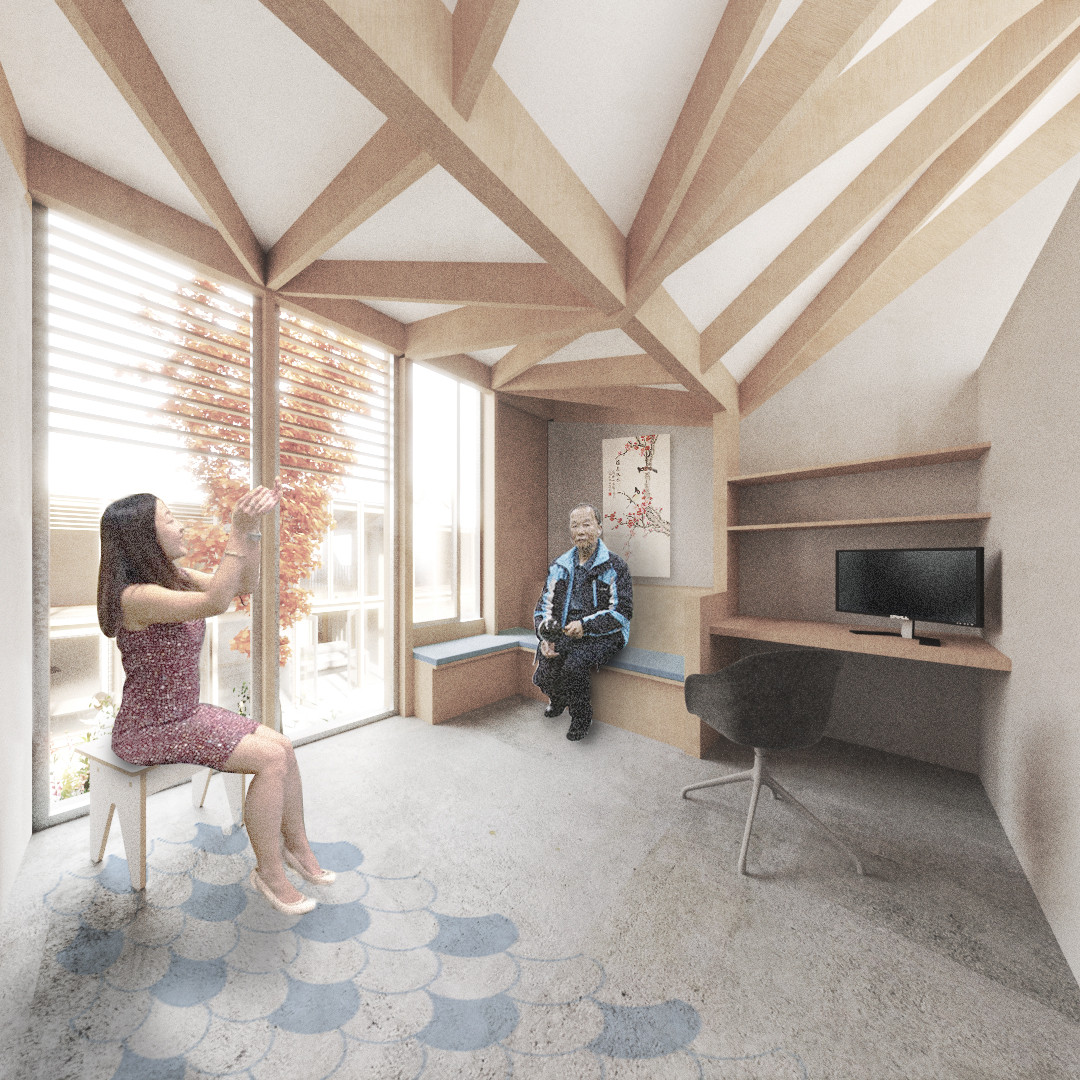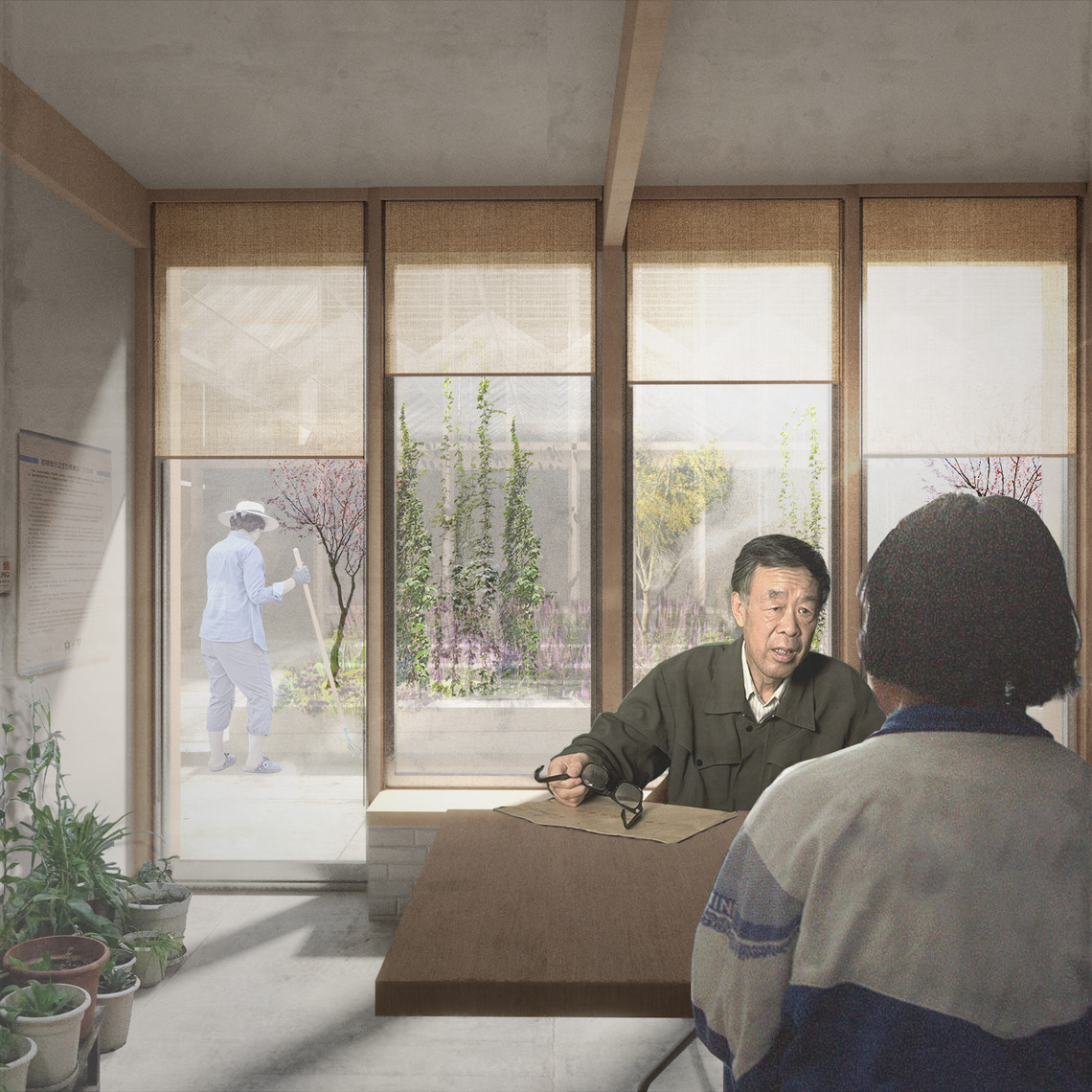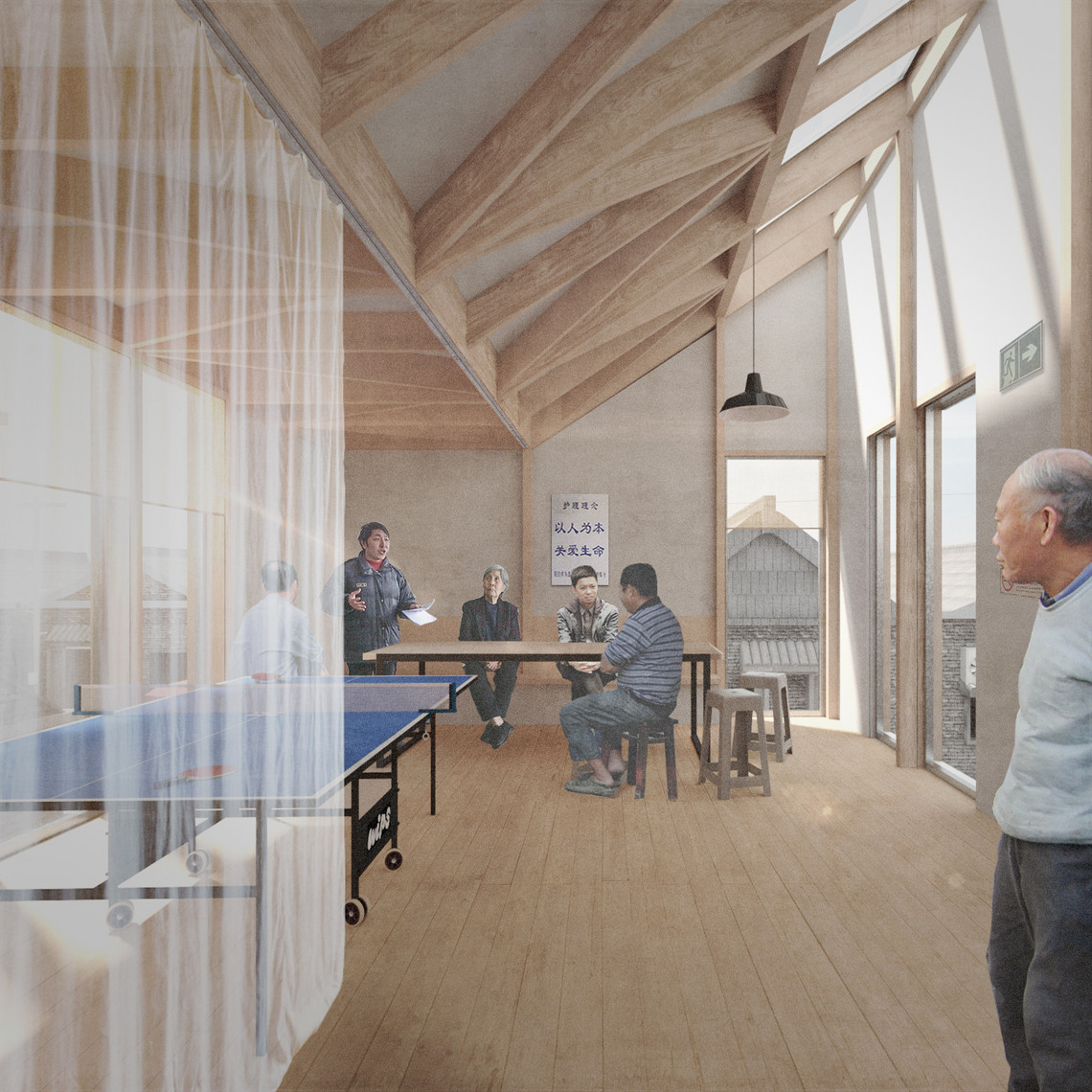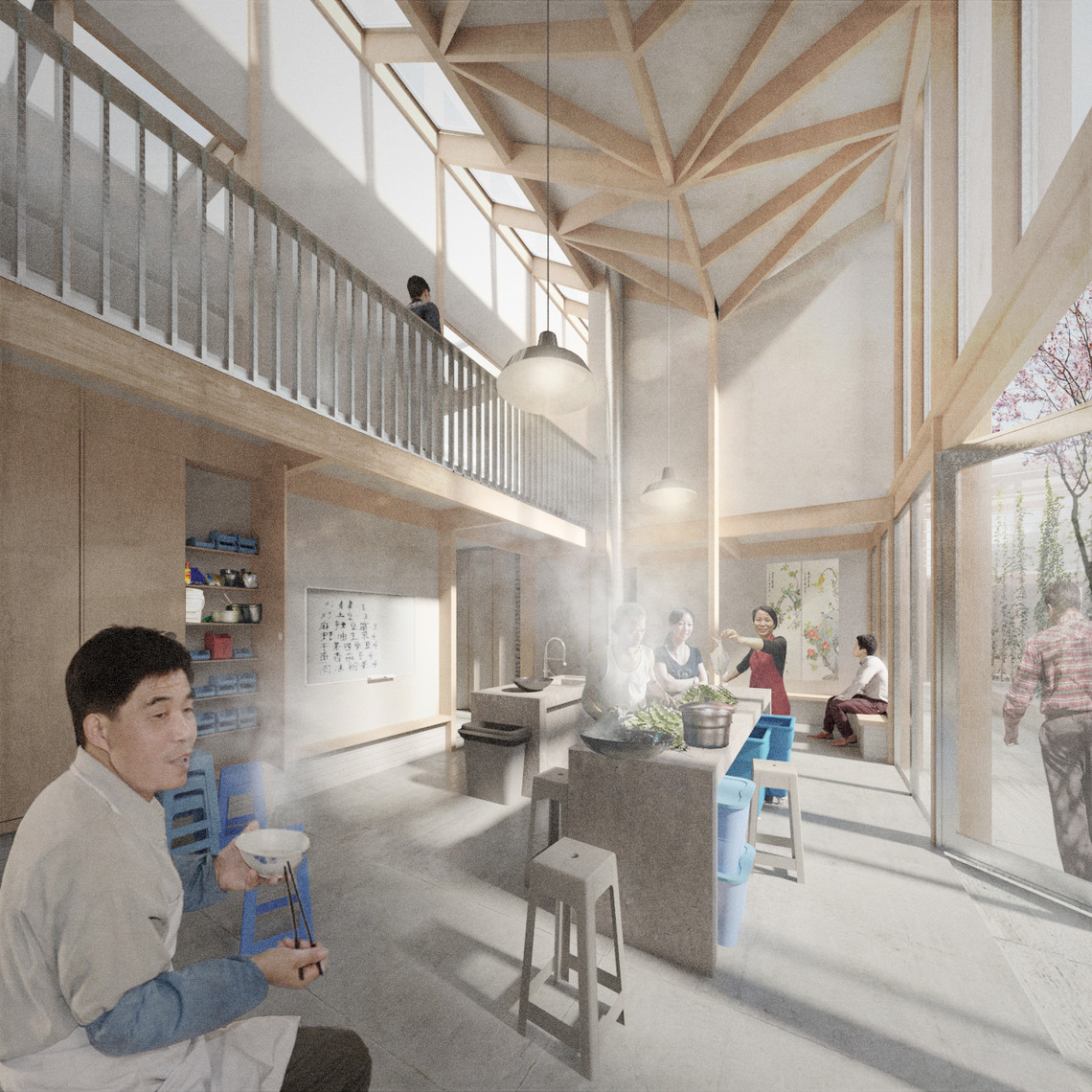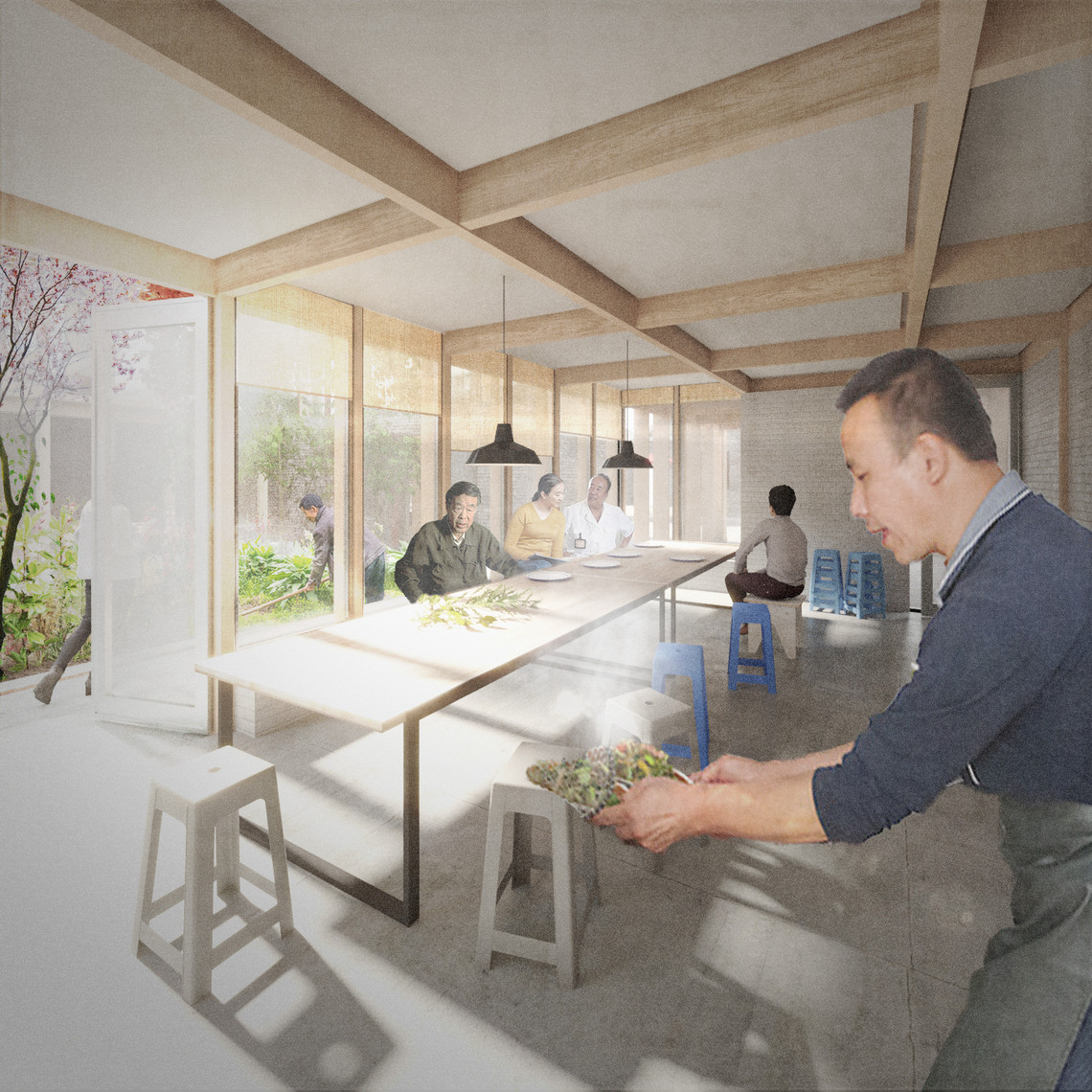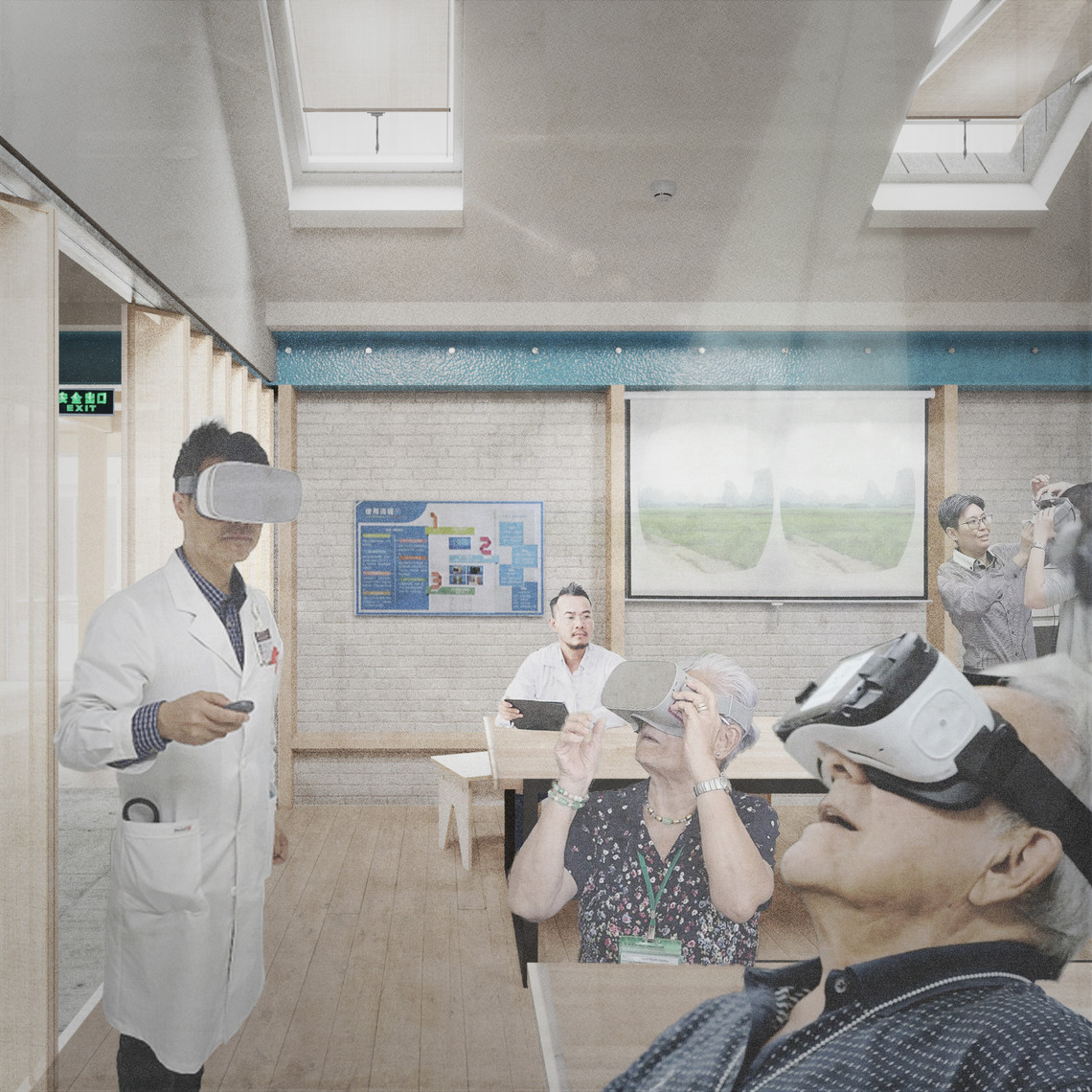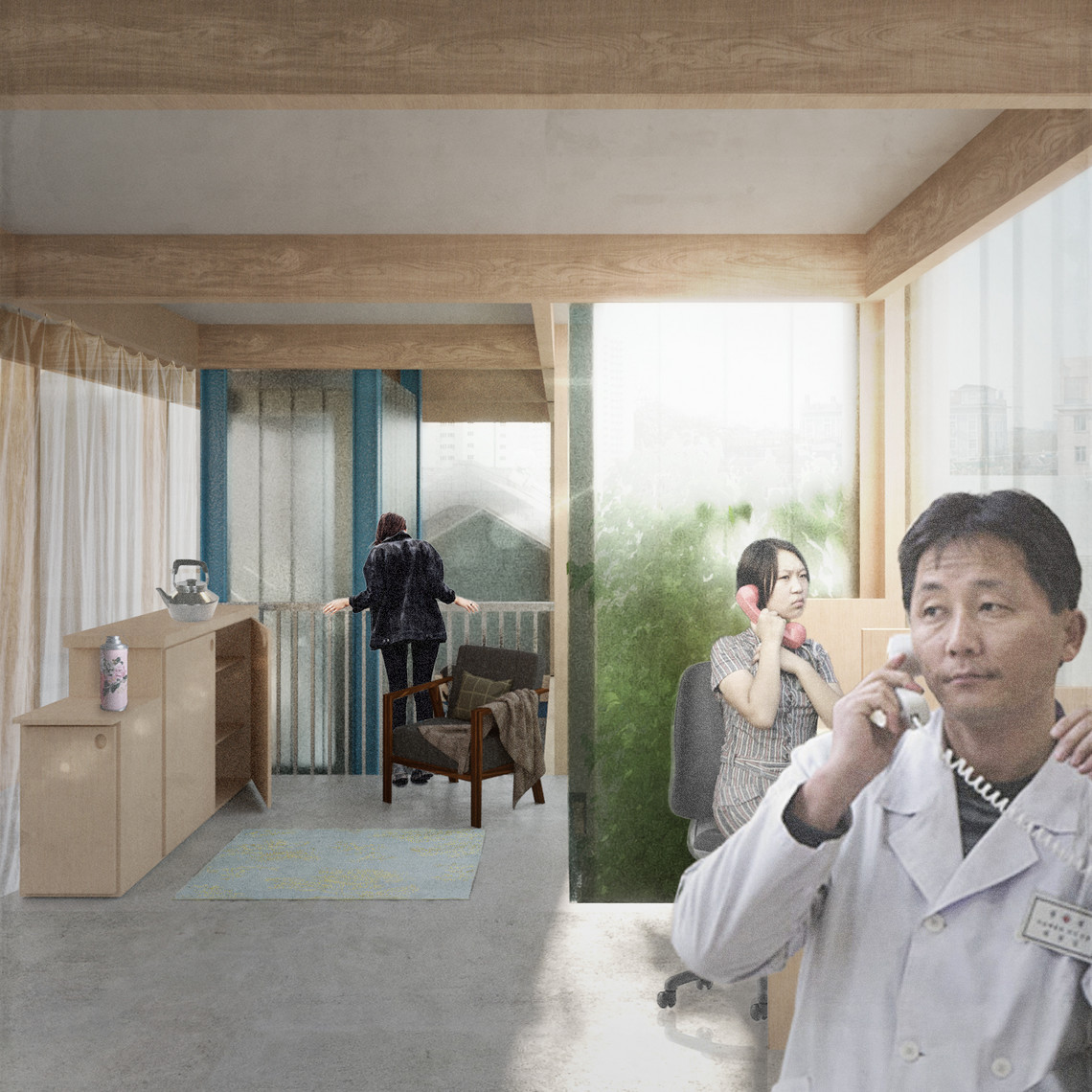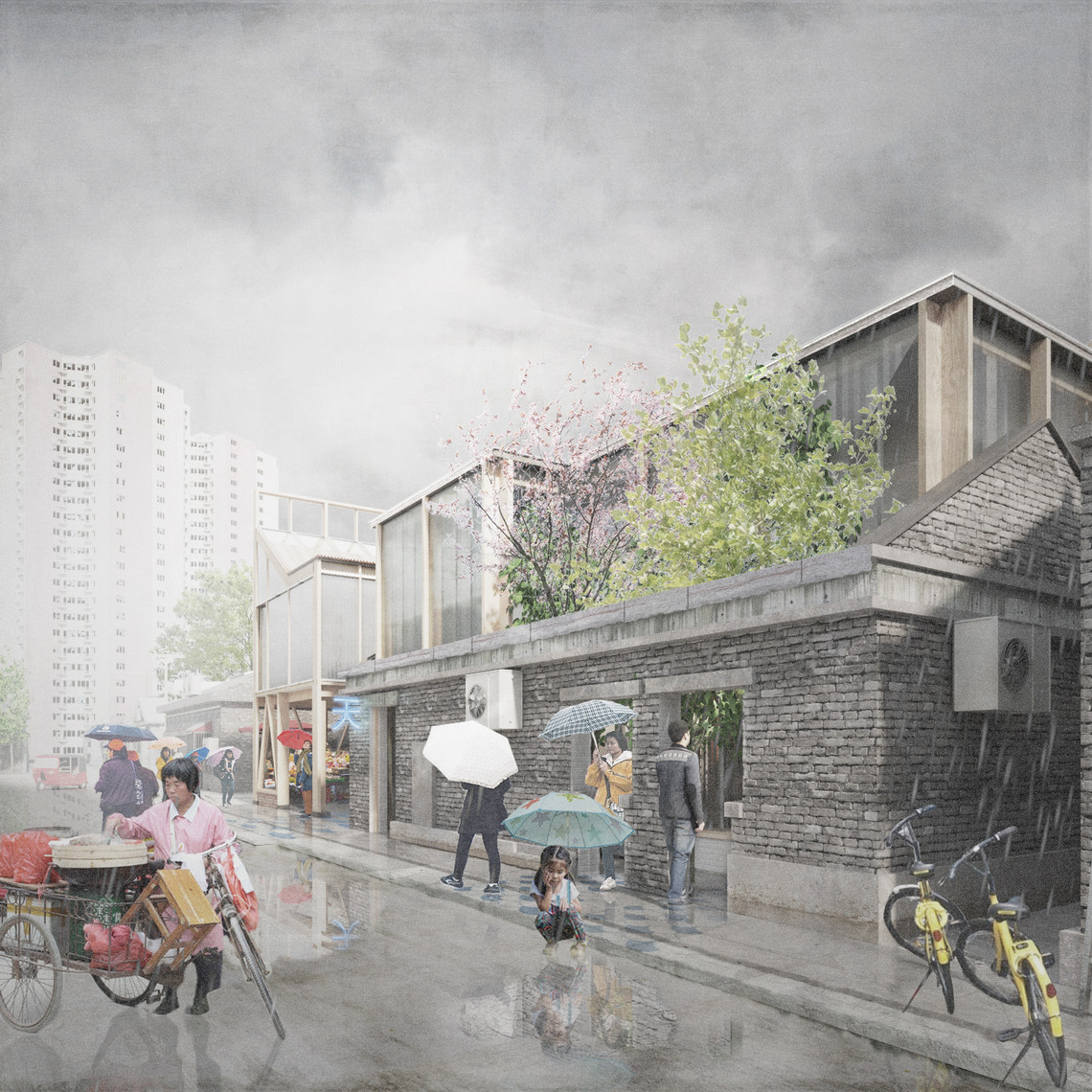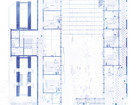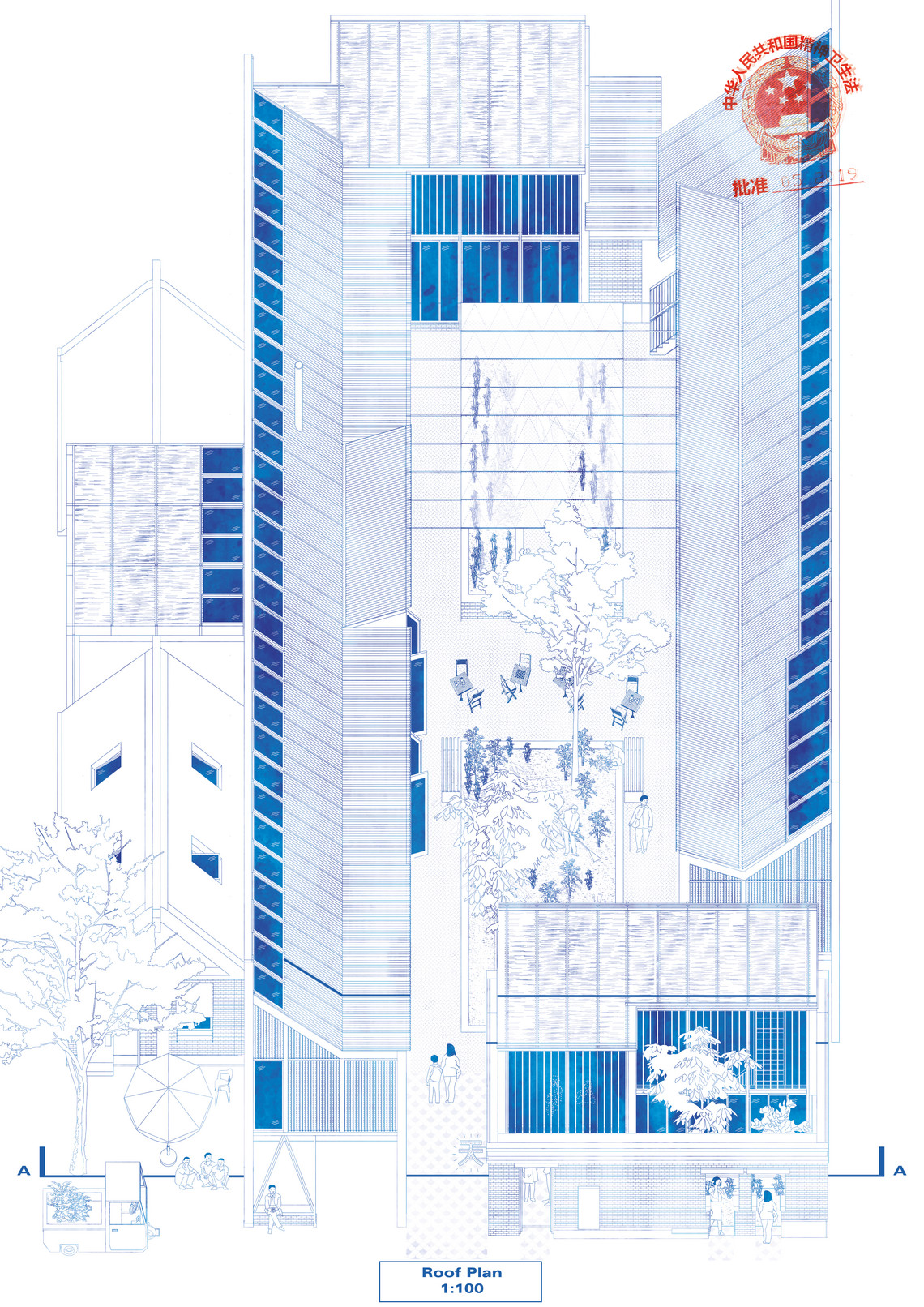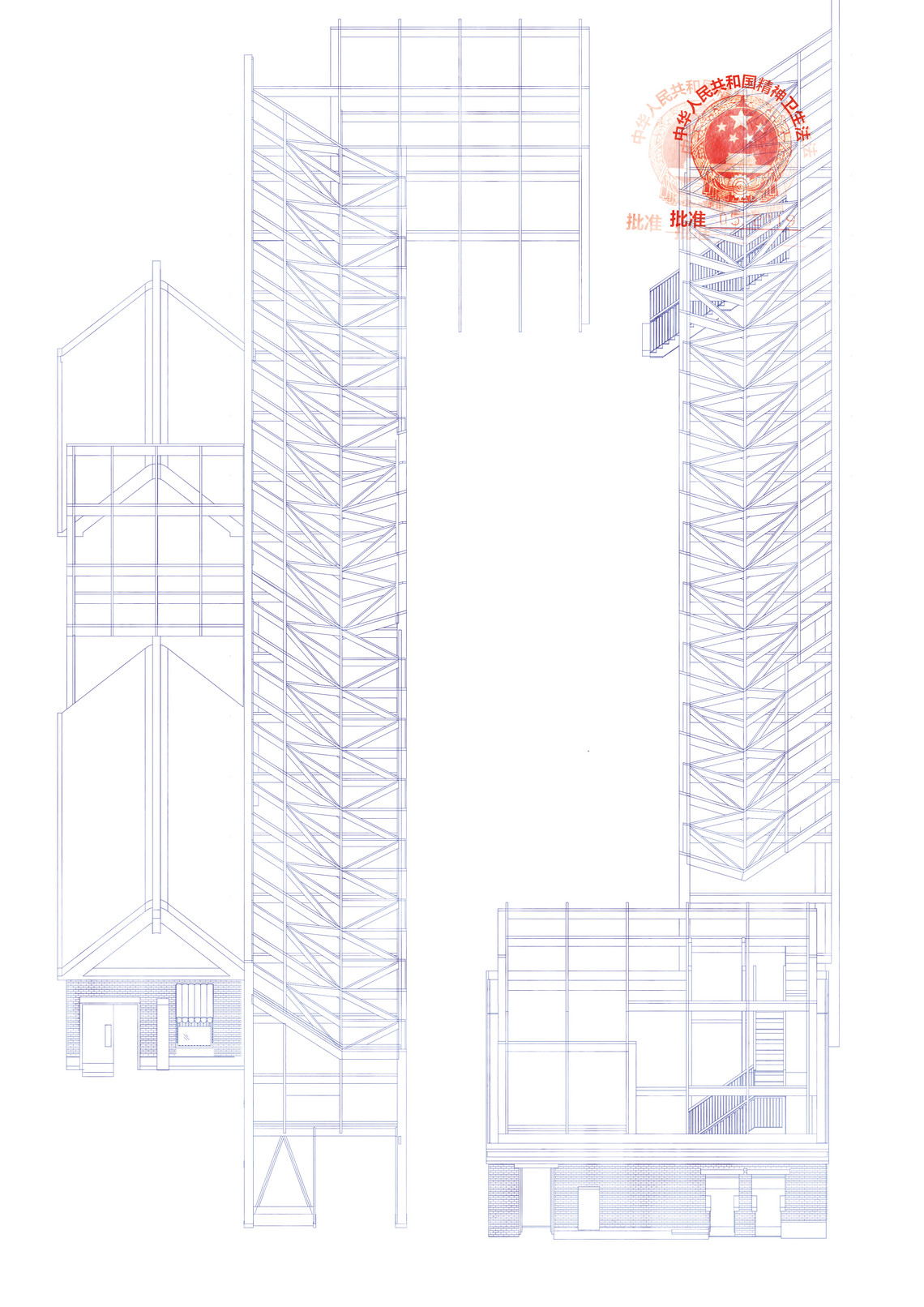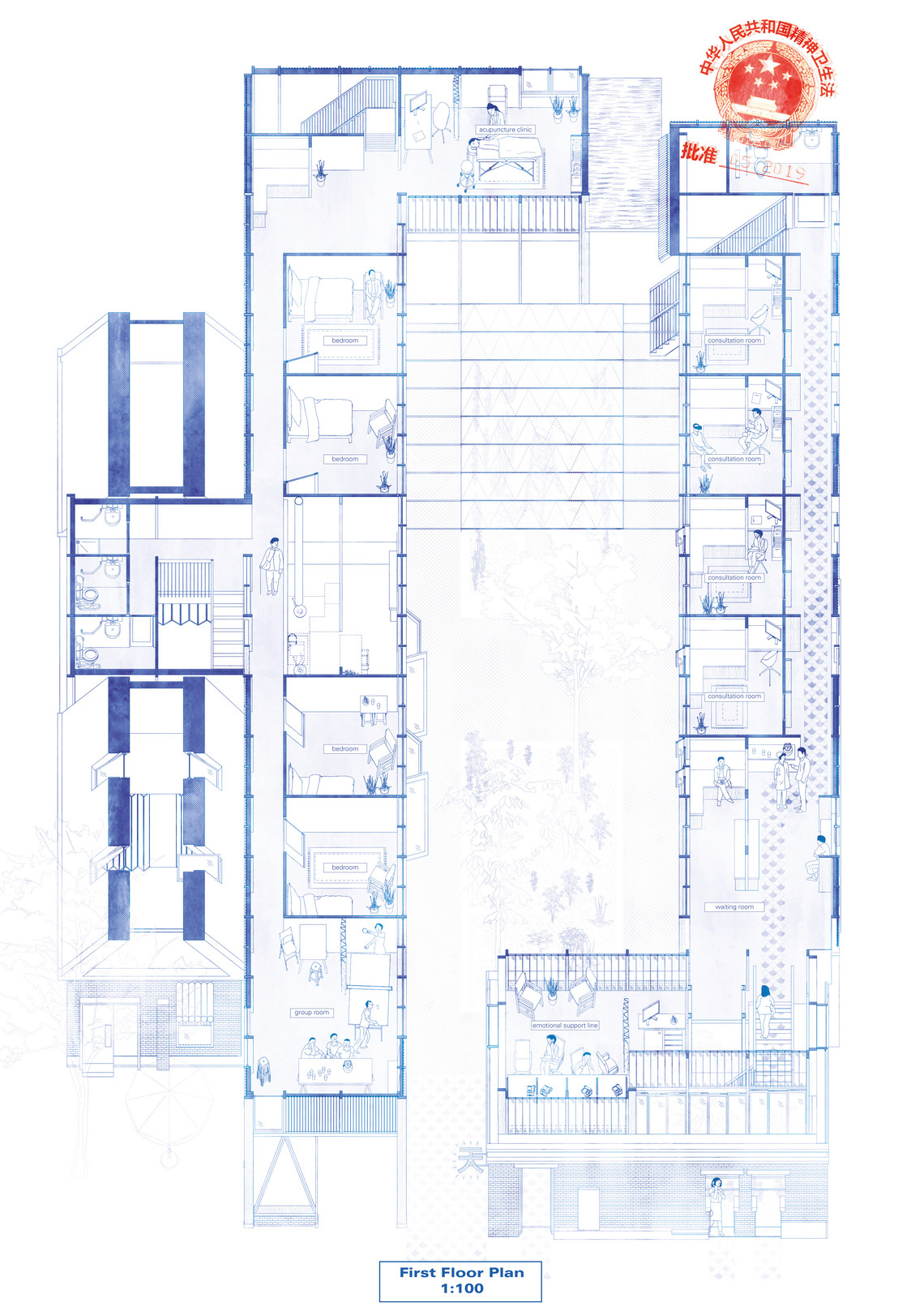
Close to Home
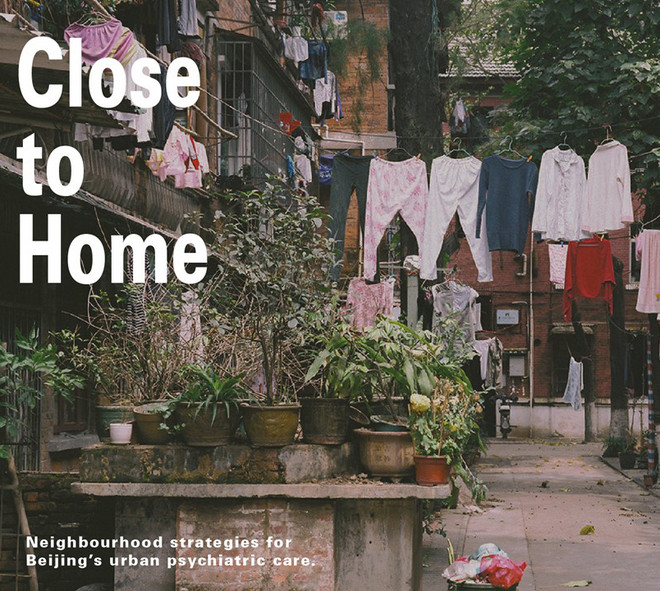
Awarded the 2019 KADK United Nations Scholarship
Jury Citation:
" 'Close to Home' engages in one of the key challenges of today's rapidly urbanising world - mental health. Often stigmatised and misinterpreted, mental healthcare facilities in China are typically large, centralised and inhumane institutions located far from the everyday spaces of their users.
Based on a process of interdisciplinary research and design speculation, this project posits a local alternative in the urban setting of Beijing, where mental health care is of immense urgency. Each intervention is crafted and represented with precision through a range of architectural media, including drawings, models, animations and a design manual.
In strengthening existing communities and neighbourhood structures, the project exemplifies how architecture could plan an essential role in the future mental well-being of our urban lives."
A Societal Crisis.
Of these 180 million people living with a mental illness, 160 Million have not had any psychological treatment or care.
This lack of treatment is a crisis in-waiting, and the economic and social consequences are yet to be fully comprehended.
Research Question
Can answers to China's urban mental health crisis be found close to home?
In this project I argue that solutions may be found within existing community and neighbourhood structures.
This is achieved by proposing a preventative & rehabilitational focused psychiatric care model based upon a urban acupuncture of care facilities across the city fabric, rather than the current model of reactive centralised institutions.
Architectural spaces and interventions are networked together by a digital layer of communication technology, bringing mental healthcare physically, and virtually, closer to each of the city’s citizens, and in doing so increasing communal and neighbourly interaction and reducing stigma and fear of illness, which is integral for good mental health.

Project Site - Xicheng, Beijing
Speculative investigations for this imagined prototype project are focused at the edge of the central Beijing’s oldest district: Xicheng.
This site has been selected for investigation as it crosses the 2nd ring-road boundary which demarks the typological change from traditional hutong neighbourhoods, danwei work unit housing to the ultra high density gated community housing schemes which has begun to dominate the Beijing skyline.
Xicheng contains the broadest spectrum of urban typologies in the city and is home to central Beijing’s last remaining psychiatric hospital.
The population of the district is 1.3 Million, over twice that of Copenhagen
Xicheng is further subdivided into 15 neighbourhoods, these proposals will focus on the Desheng Subdistrict.
Desheng is a 4.14 km2 neighbourhood, with a residential population of 116,199 and an additional transient population of 25,500.

Project Scale - A Prototype Design Manual
While the scale of the crisis spans the whole country, this project proposes a series of interventions which form the basis of a Design Manual, speculating on a possible alternative trajectory for Chinese urban mental healthcare.
The project focuses on a test site for these proposals, offering programs which are largely absent from the current mental healthcare system. These interventions will support community awareness, early diagnosis and also recovery support and community reintegration for patients.
Design Guide
Urban Acupuncture
Architectural interventions, which are each described in detail in the design guide, are intended to be strategically placed across the city fabric relating to specific site opportunities and programmatical needs.

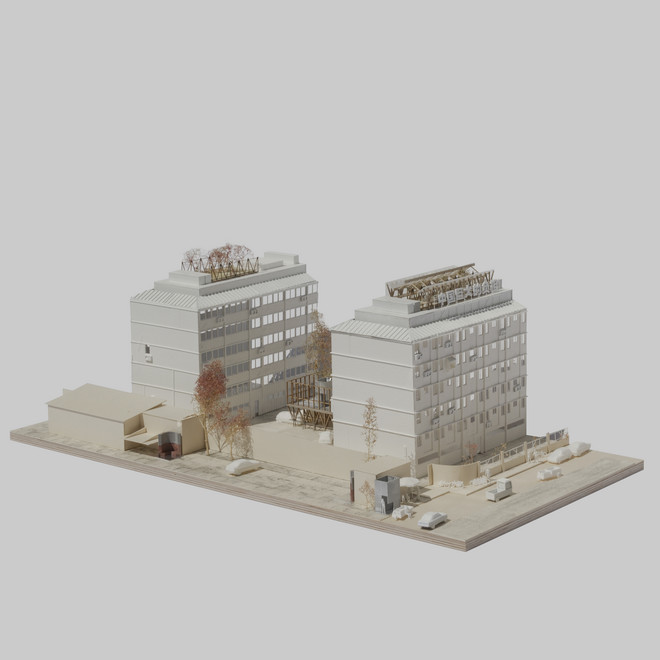

The main node in the network of interventions, the urban mental-wellness clinic, focuses on offering the space for diagnosis, treatment and rehabilitation within the densely populated hutong community.



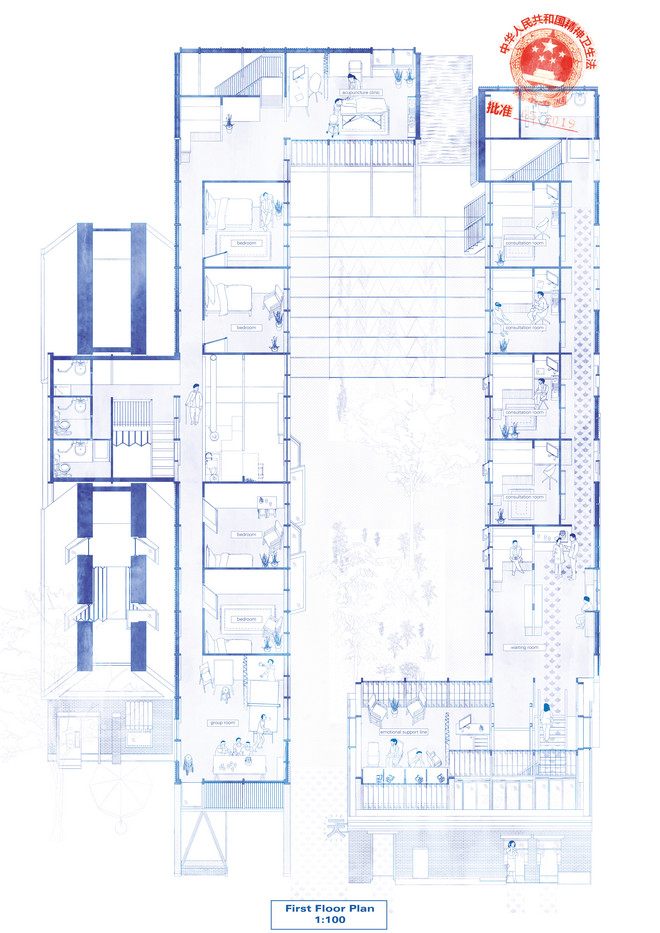
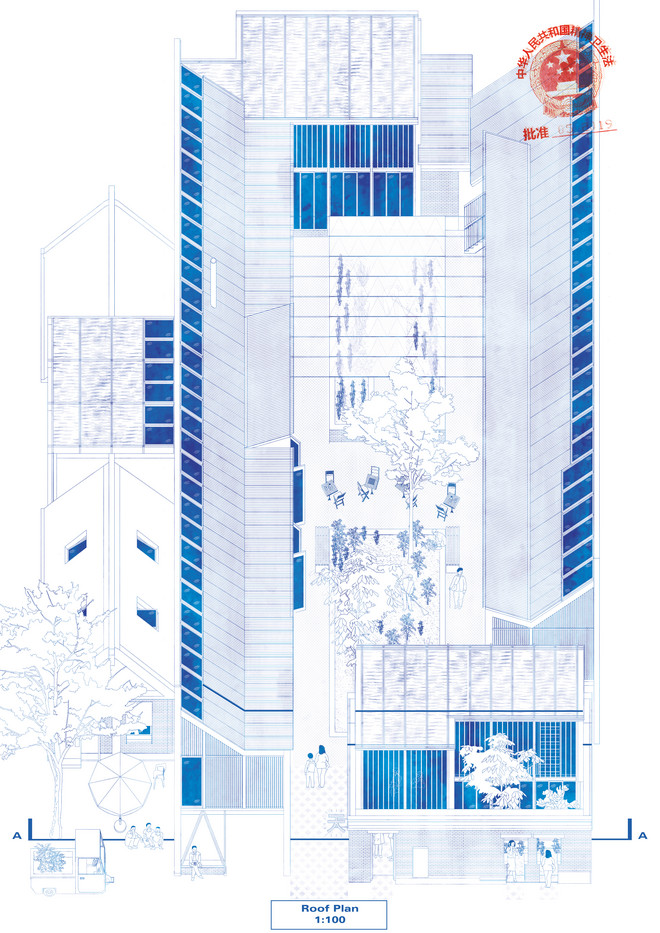
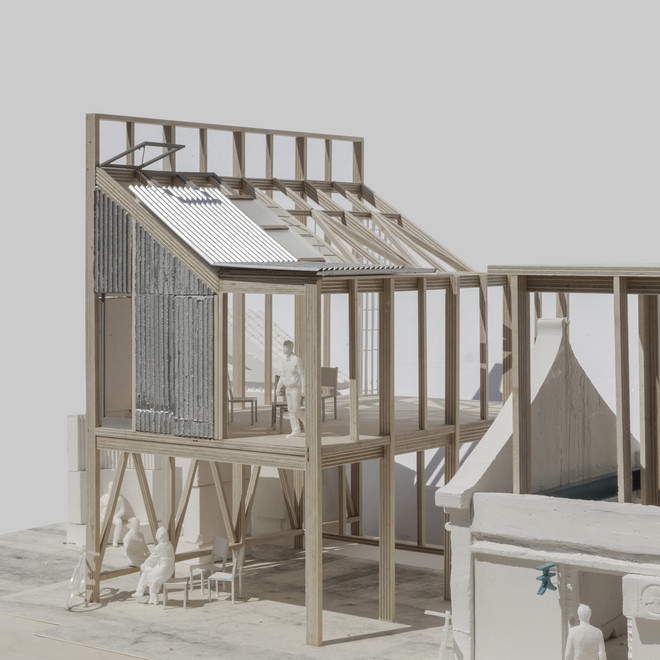

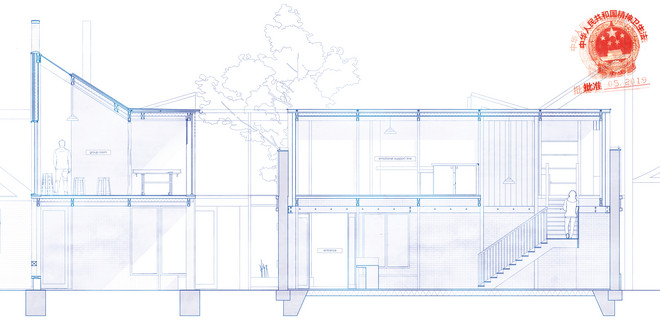
Project Program
Project Program
Research Essay
The Great Burden of China
Research Essay
[[{"fid":"71172","view_mode":"top","fields":{"format":"top","field_file_image_alt_text[und][0][value]":"","field_file_image_title_text[und][0][value]":""},"type":"media","attributes":{"class":"media-element file-top"}}]]
Close to Home, a prototype
While this project could never directly tackle the enormity of the mental health crisis in china, in terms of sheer scale, or the complexity of layered multidisciplinary expertise and resources required, I believe that through human scale interventions and additions within existing neighbourhoods and communities lessons can be learned from a prototype project such as this. Bringing China towards building an inclusive mental healthcare strategy that is innovative, compassionate and close to home.
For further information please contact cameronclarke89@gmail.com
Det Kongelige Akademi understøtter FN’s verdensmål
Siden 2017 har Det Kongelige Akademi arbejdet med FN’s verdensmål. Det afspejler sig i forskning, undervisning og afgangsprojekter. Dette projekt har forholdt sig til følgende FN-mål